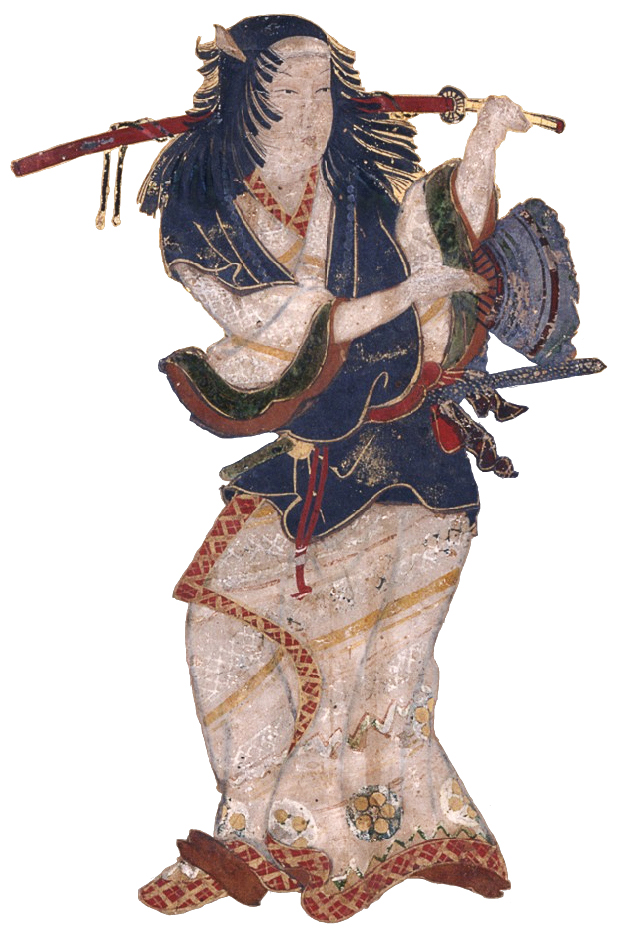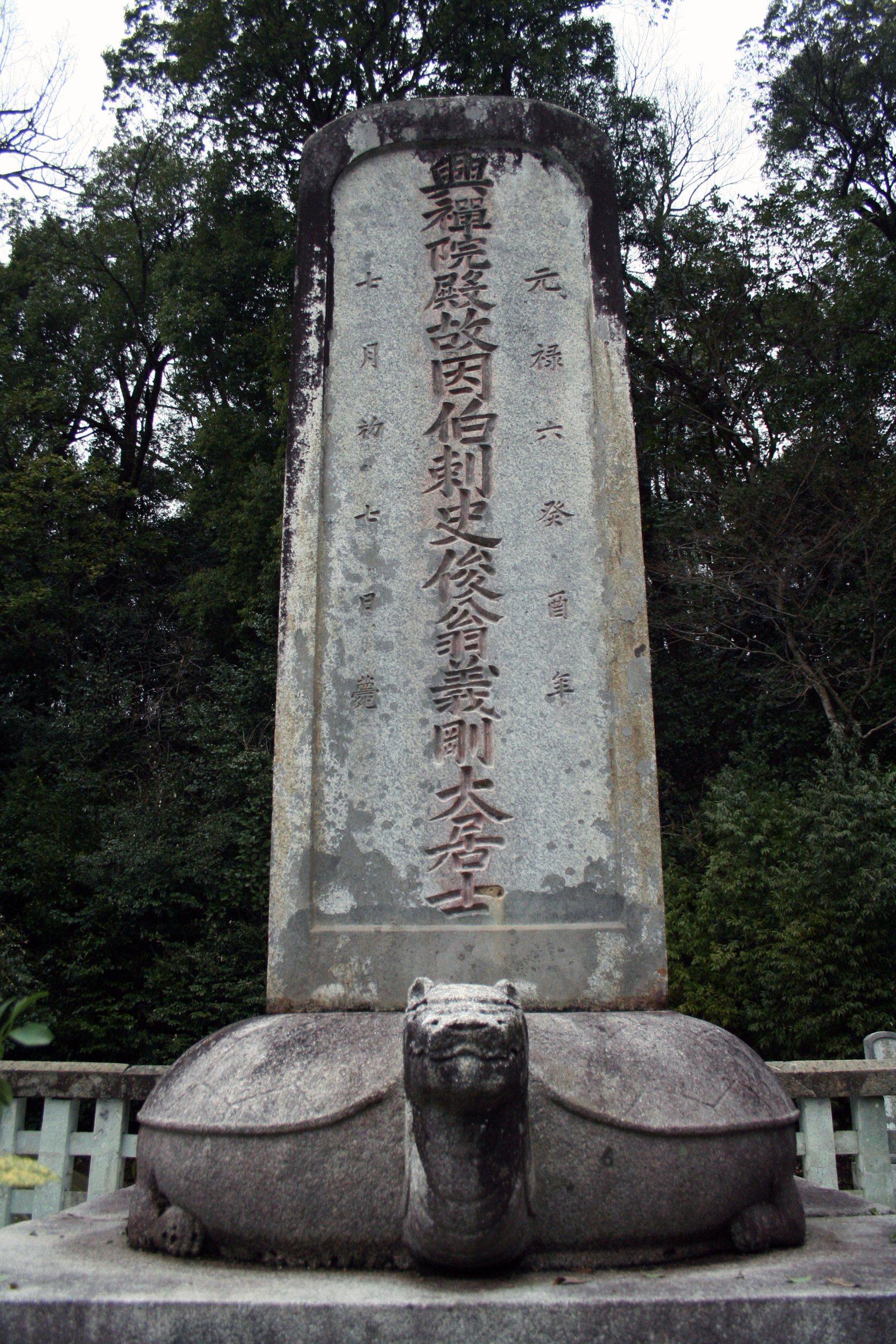|
Rice Brokers
Rice brokers, which rose to power and significance in Osaka and Edo in the Edo period (1603-1867) of Japanese history, were the forerunners to Japan's banking system. The concept originally arose in Kyoto several hundred years earlier; the early rice brokers of Kyoto, however, operated somewhat differently, and were ultimately not nearly as powerful or economically influential as the later Osaka system would be. ''Daimyōs'' (feudal lords) received most of their income in the form of rice. Merchants in Osaka and Edo thus began to organize storehouses where they would store a ''daimyō''s rice in exchange for a fee, trading it for either coin or a form of receipt; essentially a precursor to paper money. Many if not all of these rice brokers also made loans, and would become quite wealthy and powerful. As the Edo period wore on, ''daimyōs'' grew poorer and began taking out more loans, increasing the social position of the rice brokers. Rice brokers also managed, to a great exte ... [...More Info...] [...Related Items...] OR: [Wikipedia] [Google] [Baidu] |
Nihonbashi Bridge In Edo
is a business district of Chūō, Tokyo, Japan, which sprung up around the bridge of the same name that has linked two sides of the Nihonbashi River at this site since the 17th century. The first wooden bridge was completed in 1603. The current bridge, designed by Tsumaki Yorinaka and constructed of stone on a steel frame, dates from 1911. The district covers a large area to the north and east of the bridge, reaching Akihabara to the north and the Sumida River to the east. Ōtemachi and Yaesu are to the west and Kyobashi to the south. Nihonbashi, together with Kyobashi and Kanda, is the core of Shitamachi, the original downtown center of Edo-Tokyo, before the rise of newer secondary centers such as Shinjuku and Shibuya. History The Nihonbashi district was a major mercantile center during the Edo period: its early development is largely credited to the Mitsui family, who based their wholesaling business in Nihonbashi and developed Japan's first department store, Mitsuk ... [...More Info...] [...Related Items...] OR: [Wikipedia] [Google] [Baidu] |
Clearing House
Clearing house or Clearinghouse may refer to: Banking and finance * Clearing house (finance) * Automated clearing house * ACH Network, an electronic network for financial transactions in the U.S. * Bankers' clearing house * Cheque clearing * Clearing House (EU), an EU intelligence body * Clearing House Association, a New York trade group and banking association * Clearing House Automated Transfer System (HK), a real-time gross settlement system in Hong Kong * The Clearing House Payments Company, an American check clearing and wholesale funds transfer company **The Clearing House, its parent organization ** Bank Policy Institute, an entity which subsumed the Clearing House Association, a former arm of The Clearing House * New York Clearing House, first and largest U.S. bank clearing house * Pan-European automated clearing house Other uses * Access to Information Central Clearing House (UK) * Central Register and Clearing House, an administrative organization in teacher edu ... [...More Info...] [...Related Items...] OR: [Wikipedia] [Google] [Baidu] |
Yoshiwara
was a famous ( red-light district) in Edo, present-day Tokyo, Japan. Established in 1617, Yoshiwara was one of three licensed and well-known red-light districts created during the early 17th century by the Tokugawa shogunate, alongside Shimabara in Kyoto in 1640Avery, Anne Louise. ''Flowers of the Floating World: Geisha and Courtesans in Japanese Prints and Photographs, 1772–1926'' xhibition Catalogue(Sanders of Oxford & Mayfield Press: Oxford, 2006) and Shinmachi in Osaka. Created by the shogunate to curtail the tastes of and sequester the nouveau riche (merchant) classes, the entertainment offered in Yoshiwara, alongside other licensed districts, would eventually originate geisha, who would become known as the fashionable companions of the classes and simultaneously cause the demise of , the upper-class courtesans of the red-light districts. History 17th and 18th century The licensed district of Yoshiwara was created in the city of Edo, near to the area today ... [...More Info...] [...Related Items...] OR: [Wikipedia] [Google] [Baidu] |
Kabuki
is a classical form of Theatre of Japan, Japanese theatre, mixing dramatic performance with Japanese traditional dance, traditional dance. Kabuki theatre is known for its heavily stylised performances, its glamorous, highly decorated costumes, and for the elaborate make-up worn by some of its performers. Kabuki is thought to have originated in the early Edo period, when the art's founder, Izumo no Okuni, formed a female dance troupe that performed dances and light sketches in Kyoto. The art form later developed into its present all-male theatrical form after women were banned from performing in kabuki theatre in 1629. Kabuki developed throughout the late 17th century and reached its zenith in the mid-18th century. In 2005, kabuki theatre was proclaimed by UNESCO as an intangible heritage possessing outstanding universal value. In 2008, it was inscribed in the UNESCO Intangible Cultural Heritage Lists, UNESCO Representative List of the Intangible Cultural Heritage of Humanity ... [...More Info...] [...Related Items...] OR: [Wikipedia] [Google] [Baidu] |
Usury
Usury () is the practice of making loans that are seen as unfairly enriching the lender. The term may be used in a moral sense—condemning taking advantage of others' misfortunes—or in a legal sense, where an interest rate is charged in excess of the maximum rate that is allowed by law. A loan may be considered usurious because of excessive or abusive interest rates or other factors defined by the laws of a state. Someone who practices usury can be called a ''usurer'', but in modern colloquial English may be called a ''loan shark''. In many historical societies including ancient Christian, Jewish, and Islamic societies, usury meant the charging of interest of any kind, and was considered wrong, or was made illegal. During the Sutra period in India (7th to 2nd centuries BC) there were laws prohibiting the highest castes from practicing usury. Similar condemnations are found in religious texts from Buddhism, Judaism ('' ribbit'' in Hebrew), Christianity, and Islam (''rib ... [...More Info...] [...Related Items...] OR: [Wikipedia] [Google] [Baidu] |
Asakusa
is a district in Taitō, Tokyo, Japan. It is known for Sensō-ji, a Buddhist temple dedicated to the bodhisattva Kannon. There are several other temples in Asakusa, as well as various festivals, such as . History The development of Asakusa as an entertainment district during the Edo period came about in part because of the neighboring district, Kuramae. Kuramae was a district of storehouses for rice, which was then used as payment for servants of the feudal government. The keepers () of these storage houses initially stored the rice for a small fee, but over the years began exchanging the rice for money or selling it to local shopkeepers at a margin. Through such trading, many came to have a considerable amount of disposable income and as result theaters and geisha houses began to spring up in nearby Asakusa. For most of the 20th century, Asakusa remained a major entertainment district in Tokyo. The or "Sixth District" was in particular famous as a theater district, f ... [...More Info...] [...Related Items...] OR: [Wikipedia] [Google] [Baidu] |
Monetary Policy
Monetary policy is the policy adopted by the monetary authority of a nation to affect monetary and other financial conditions to accomplish broader objectives like high employment and price stability (normally interpreted as a low and stable rate of inflation). Further purposes of a monetary policy may be to contribute to economic stability or to maintain predictable exchange rates with other currencies. Today most central banks in developed countries conduct their monetary policy within an inflation targeting framework, whereas the monetary policies of most developing countries' central banks target some kind of a fixed exchange rate system. A third monetary policy strategy, targeting the money supply, was widely followed during the 1980s, but has diminished in popularity since then, though it is still the official strategy in a number of emerging economies. The tools of monetary policy vary from central bank to central bank, depending on the country's stage of development, inst ... [...More Info...] [...Related Items...] OR: [Wikipedia] [Google] [Baidu] |
Dōjima Rice Exchange
The Dōjima Rice Exchange (堂島米市場, ''Dōjima kome ichiba'', 堂島米会所, ''Dōjima kome kaisho''), located in Osaka, was the center of Japan's system of rice brokers, which developed independently and privately in the Edo period and would be seen as the forerunners to a modern banking system. It was first established in 1697, officially sanctioned, sponsored and organized by the shogunate in 1773, reorganized in 1868, and dissolved entirely in 1939, being absorbed into the Government Rice Agency (日本米穀株式会社)(cf. :ja:食糧管理制度). The Japanese economy grew rapidly throughout the 17th century, culminating in the period known as Genroku (1688–1704) during which merchants prospered like never before. It was at this time that rice brokers and moneychangers (両替商, ''ryōgaeshō'') gathered their shops and warehouses in the Dōjima area; the Rice Exchange can be said to have been established in 1697, the year it received a license from the ... [...More Info...] [...Related Items...] OR: [Wikipedia] [Google] [Baidu] |
Confucianism
Confucianism, also known as Ruism or Ru classicism, is a system of thought and behavior originating in ancient China, and is variously described as a tradition, philosophy, Religious Confucianism, religion, theory of government, or way of life. Founded by Confucius in the Hundred Schools of Thought era (c. 500 BCE), Confucianism integrates philosophy, ethics, and social governance, with a core focus on virtue, Harmonious Society, social harmony, and Filial piety, familial responsibility. Confucianism emphasizes virtue through self-cultivation and communal effort. Key virtues include ''Ren (philosophy), ren'' (benevolence), ''Yi (philosophy), yi'' (righteousness), ''Li (Confucianism), li'' (propriety), ''Wisdom, zhi'' (wisdom), and ''Xin (virtue), xin'' (sincerity). These values, deeply tied to the notion of ''tian'' (heaven), present a worldview where human relationships and social order are manifestations of sacred moral principles.. While Confucianism does not emphasize an ... [...More Info...] [...Related Items...] OR: [Wikipedia] [Google] [Baidu] |
Genroku
was a after Jōkyō and before Hōei. The Genroku period spanned the years from September 1688 to March 1704. The reigning emperor was .Titsingh, Isaac. (1834). ''Annales des empereurs du japon'', p. 415. The period was known for its peace and prosperity, as the previous hundred years of peace and seclusion in Japan had created relative economic stability. The arts and architecture flourished. There were unanticipated consequences when the shogunate debased the quality of coins as a strategy for financing the appearance of continuing Genroku affluence. This strategic miscalculation caused abrupt inflation. Then, in an effort to solve the ensuing crisis, the introduced what were called the Kyōhō Reforms. Change of era The was 1688. The new era name was created to mark the beginning of the reign of Emperor Higashiyama of Japan, Higashiyama. The previous era ended and the new one commenced in Jōkyō 5, on the 30th day of the 9th month. A sense of optimism is suggested in the ... [...More Info...] [...Related Items...] OR: [Wikipedia] [Google] [Baidu] |
Koku
The is a Chinese-based Japanese unit of volume. One koku is equivalent to 10 or approximately , or about of rice. It converts, in turn, to 100 shō and 1,000 gō. One ''gō'' is the traditional volume of a single serving of rice (before cooking), used to this day for the plastic measuring cup that is supplied with commercial Japanese rice cookers. The ''koku'' in Japan was typically used as a dry measure. The amount of rice production measured in ''koku'' was the metric by which the magnitude of a feudal domain ('' han'') was evaluated. A feudal lord was only considered ''daimyō'' class when his domain amounted to at least 10,000 ''koku''. As a rule of thumb, one ''koku'' was considered a sufficient quantity of rice to feed one person for one year. The Chinese equivalent or cognate unit for capacity is the ''shi'' or '' dan'' () also known as ''hu'' (), now approximately 103 litres but historically about . Chinese equivalent The Chinese 石 ''dan'' is equal to 10 ''d ... [...More Info...] [...Related Items...] OR: [Wikipedia] [Google] [Baidu] |







